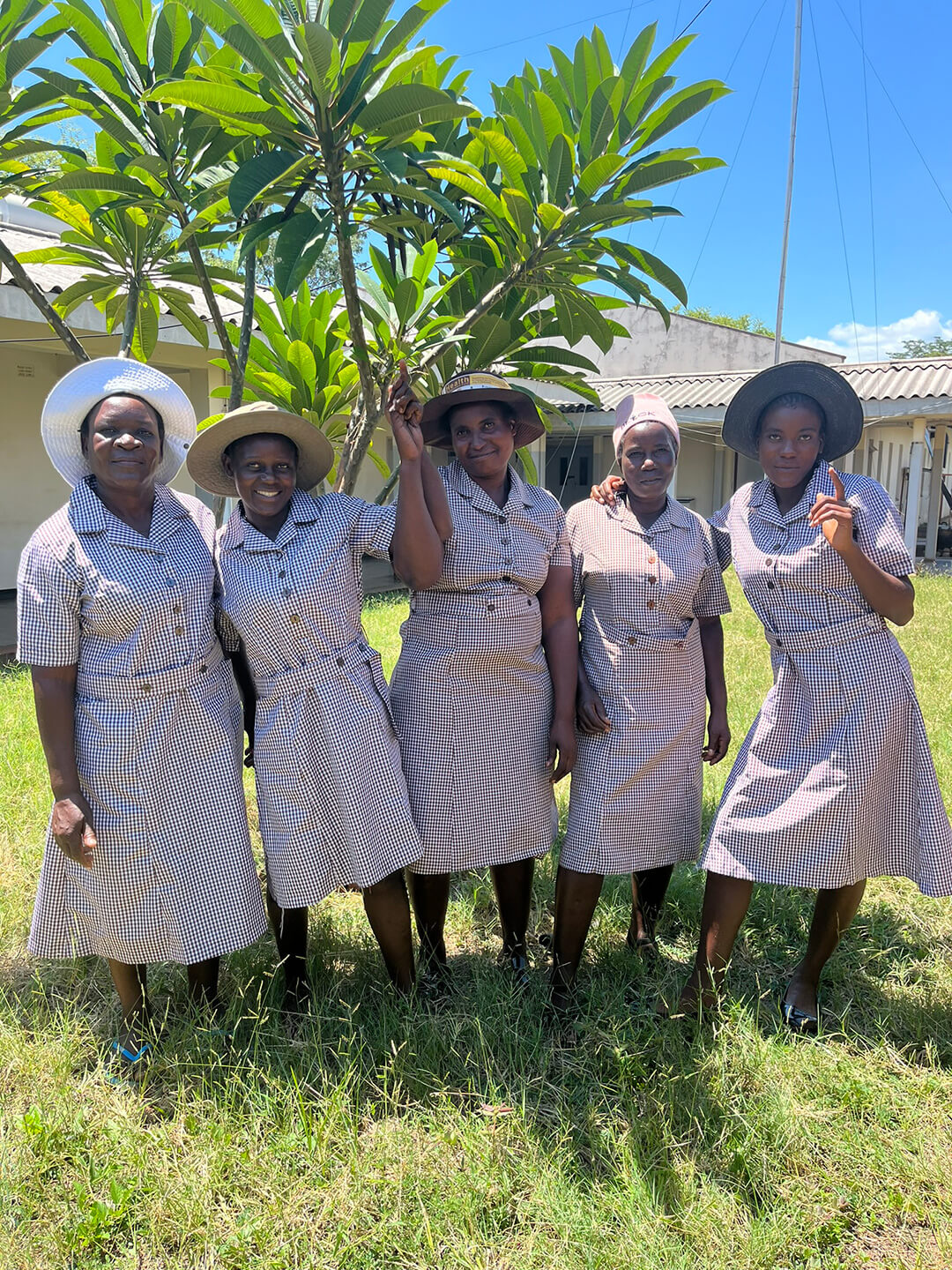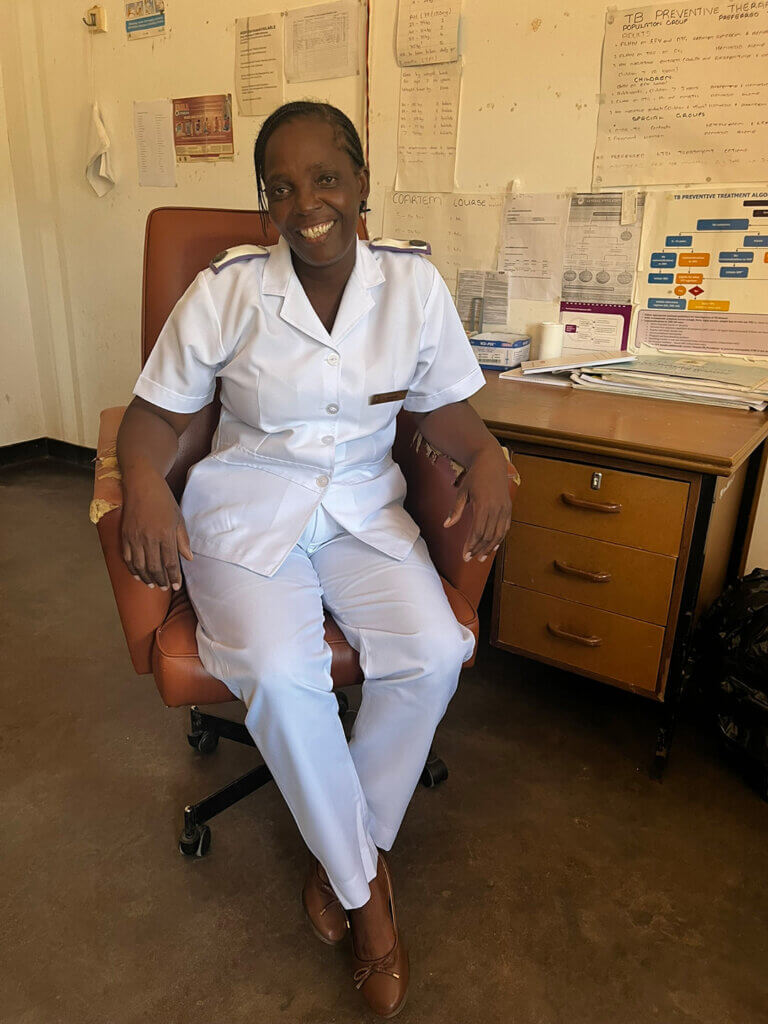From Australia to Zimbabwe, the HPV vaccine’s impact endures

Eighteen years after Australia became the first country in the world to introduce a national HPV vaccination program, its impact continues to unfold in communities far beyond its borders. In Siakobvu, Zimbabwe, where access to cervical cancer screening and prevention has long been limited, the vaccine will soon be reaching many women for the first time.
Nicoletta Snellen, Program Officer at the Judith Neilson Foundation, spoke with Sister Jeremiah, a primary care nurse, about the promise and urgency of the global effort to eliminate cervical cancer and CHAI’s role in assisting the Ministry of Health to achieve that goal.
On 29 August 2006, Australia made history by administering its first Human Papillomavirus (HPV) vaccine, marking the beginning of a national effort to prevent cervical cancer. The vaccine was developed in the 1990s by Professor Ian Frazer and Dr Jian Zhou at the University of Queensland. In 2007, Australia became the first country to roll out a national HPV vaccination program.
At the time, cervical cancer was the 8th most common cancer in Australian women, claiming thousands of lives too soon. Two types of the virus, HPV-16 and HPV-18, which are responsible for nearly all cervical cancers, were widespread.
The impact of the vaccine was remarkable. Within five years, HPV-16 and HPV-18 rates in young women dropped by 77%. Since then, cervical cancer rates and deaths have halved. Today, Australia has some of the lowest rates in the world and is on track to be the first country to eliminate cervical cancer as a public health problem by 2035.
A global health gap
While countries like Australia have made remarkable strides toward eliminating cervical cancer, the story is very different elsewhere. Globally, cervical cancer is still the fourth most common cancer in women, and in sub-Saharan Africa, it remains the leading cause of cancer-related death.
Women living with HIV are especially vulnerable, facing a six-fold increased risk of developing cervical cancer. One in five children who lose their mother to cancer, lose her to cervical cancer.
The tragedy is that this disease is largely preventable. Yet 90% of cervical cancer deaths occur in low and middle income countries where access to HPV vaccinations, cervical cancer screenings and treatment remains out of reach.
Closing the gap in Zimbabwe
The Clinton Health Access Initiative (CHAI) is working with Zimbabwe’s Ministry of Health and Child Care to close the cervical cancer services gap in Africa. In Zimbabwe, CHAI, in collaboration with the Ministry, is scaling up HPV vaccination and expanding access to safe, affordable cervical cancer screening and treatment for pre-cancerous cervical lesions. Since September 2023, more than 20,000 women in Mashonaland West province have been screened for HPV. By the end of 2026, CHAI aims to screen an additional 12,000 women and vaccinate over 85,000 girls with the HPV vaccine, bringing lifesaving preventative services to the communities that need it the most.
Kariba: A long road to care

In northern Zimbabwe, near the Zambian border, lies the town of Kariba, a popular destination for holidaymakers, houseboats, and hippos. But for over 12,000 women between the ages of 25-49, accessing cervical cancer services has been difficult and costly. Until recently, the nearest health facility offering cervical cancer screening was more than 300 kilometres away, with travel often unsafe, especially at night due to wildlife.
Cervical cancer Is a silent disease

At Siakobvu Hospital, Sister Jeremiah, is a dedicated primary care nurse, working alongside CHAI to bring lifesaving health services closer to women. Together, they’re rolling out HPV vaccination delivery and launching cervical cancer screening programs in rural Kariba advancing the MoH’s ambition to eliminate cervical cancer nationwide. But Sister Jeremiah’s commitment is also deeply personal, she once faced her own scare with cervical cancer.
“When I look back, I actually didn’t have any symptoms” says Sister Jeremiah, warning that cervical cancer is a silent disease. For many women, it shows no symptoms until it’s already advanced. That’s why, she says, community education is critical: “people need to understand the disease and why the screenings matter, even when you do not feel sick”.
It was during a visit to her parents, nearly 400 kilometres from Siakobvu, that she decided to stop by Banket Hospital for a checkup. There, she underwent a Visual Inspection with Acetic Acid and Cervicography (VIAC) – a screening method used to detect early signs of cervical cancer. To her surprise, the VIAC screen was positive, and she was immediately recommended a Loop Electrosurgical Excision (LEEP) procedure, a treatment that removes abnormal cells from the cervix.
Three weeks later, following a medical consultation on her LEEP results, Sister Jeremiah was advised to have a hysterectomy. Fearing pressure from family to seek traditional herbs and medicine, Sister Jeremiah kept her decision private and proceeded with the surgery. “My colleagues said, ‘You look so fit, you don’t look sick at all,’” she recalls. “Many of them didn’t even know I’d had the procedure.”
Access to care remains a huge barrier, “to see a gynaecologist you must travel very far. There’s only one bus, no accommodation, and it’s not easy for women here in Kariba to get help,” she explains.
Screening, treatment, and hope

In the Kariba district, Zimbabwe’s Ministry of Health and Child Care together with CHAI has trained 37 healthcare workers, and 44 community health workers in HPV self-collection, equipping them to provide quality screening and to address common myths and fears that often prevent women from getting screened. More than 1,000 women in Kariba have been screened for cervical cancer since April 2025, many for the first time in their lives.
Now, Sister Jeremiah is helping bring VIAC (Visual Inspection with Acetic Acid and Cervicography) services to women in rural Kariba, reducing the need to travel over 200km to access screening and treatment services. “It will be so much easier. Our women will be screened, supported, and referred. They won’t have to go through the journey that I did.”
A shared global goal
Australia is leading the world in cervical cancer elimination, but this very progress highlights the stark global health inequalities for the most vulnerable communities. Still, there is hope. Australia’s HPV vaccine is already transforming lives far beyond its borders, bringing the possibility of cervical cancer elimination within reach for communities once left behind.
The upcoming fourth high-level meeting of the United Nations General Assembly (UNGA) on the prevention and control of noncommunicable diseases in September 2025 will also reaffirm the commitment to eliminating cervical cancer as a public health problem.
The introduction and scale up of CHAI’s cervical cancer services in Zimbabwe means that more women can now access prevention, early detection, and timely treatment. It’s a practical step toward closing the health gap that leaves too many women behind. For the Judith Neilson Foundation, this work reflects a core focus: supporting local solutions that strengthen public health systems and make essential care more accessible, especially for women and girls at the greatest risk.